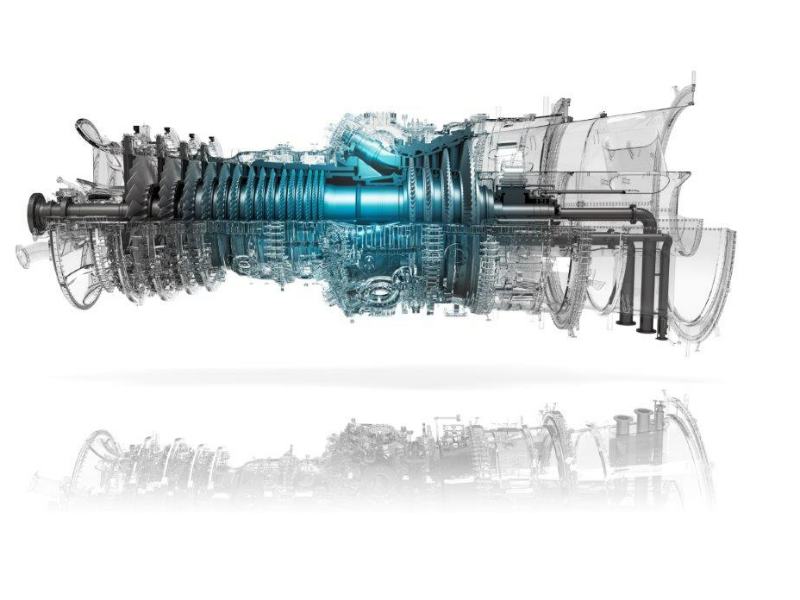
Hydrogen is increasingly recognised as a key enabler of the energy transition, both as a fuel to decarbonise heavy industry and as a storage medium for renewable energy. Another important application for hydrogen is its role in grid security, flexibility and stabilisation, writes Javier Cavada of Mitsubishi Power.
Grid stabilisation has emerged as a key challenge in the face of increasing demands on the energy grid owing to the rapid increase in installed capacity from renewable sources. In traditional energy systems fossil fuels, such as coal, and gas, as well as low carbon sources such as nuclear, provide reliable and constant stability to the grid, known as an energy baseload.
As the world prioritizes making progress towards meeting climate change goals, stabilisation services must ideally be carbon neutral (or negative). Further, they need to act in the same way as thermal baseload power – controllable, reliable, and deliver the fastest response possible to meet the demands of a modern electricity system.
Gas-fired power stations add security and flexibility to the network, helping to supply power at times when low wind or a lack of sufficient sunlight make renewable generation challenging.
Have you read?
First Mitsubishi Power gas turbine in the US to operate in simple cycle
Mitsubishi Power supplies gas turbines for 1.6GW peaker plant in Brazil
Hydrogen electrolysers: Breathing life into a net zero future
Given the interruptible nature of some renewables, there are concerns about the need to dispatch large blocks of power quickly to provide grid stability. In these situations, the grid regulating agencies use gas turbine power plants to balance supply and demand. Gas turbines are the most efficient option to provide dispatchable power, but questions remain about their utilization in a future, carbon-free world.
Are gas turbines the most important link between the past and the future of energy generation?
While the world is declining its use of fossil fuels, it cannot and will not be able to stop using fossil fuels in the short term – that’s why there is a need to build resilient energy systems for power generation that can adapt from using fossil fuels to utilising clean energy.
And while gas turbines may have their origins in the age of fossil fuels, utilising natural gas, they have a crucial role to play in transitioning power systems to using clean fuels, such as hydrogen, for long-term power generation.
Modern gas turbines have the dual benefit of having highly efficient fuel combustion and fuel emissions, with the ability to be fully adapted to use fuels like hydrogen, delivering major carbon reduction impact. Even with small volumes of hydrogen blended, significant emissions reductions are possible.

The final challenge will be turbines running on 100% hydrogen, providing grid services and electricity in hours without renewable resources. But even during the energy transition, as we move towards an emissions-free world, these highly efficient turbines can reduce dependence on fossil fuels by using a blend of green hydrogen and gas.
Mitsubishi Power has been validating combined-cycle gas turbine power plants with hydrogen power for two decades. All new gas turbines today are “hydrogen ready” to various extents, with a line-up of combustion technologies, which can either co-fire on anything from 10-100% hydrogen. This presents a very attractive decarbonisation pathway for power operators.
Our most advanced gas turbine has a world-class reliability of 99.6% and has an efficiency of 64%, the world’s highest, reducing CO2 emissions by 65%, replacing coal-fired generation with natural gas. The turbine can generate up to 840MW of power in a combined cycle set up and is fully adaptable for hydrogen fuel, running on up to 30% hydrogen and 70% natural gas.
Validated hydrogen technologies
Mitsubishi Power has been advancing hydrogen fuel for more than 50 years, accumulating extensive experience in the aerospace, oil and gas, petrochemical, chemical, and steel industries. This has resulted in a proven track record backed by longstanding relationships with power operators and technology leaders committed to the advancement of hydrogen as a fuel of the future.
Mitsubishi validates all of its gas turbines at Takasago Hydrogen Park, the world’s first centre for the validation of hydrogen-related technologies, which entered full-scale operation in September. The park is fully grid-connected, playing a crucial role in guaranteeing that our next-generation technologies are as reliable as they are sustainable.
In the coming years, facilities like Takasago Hydrogen Park will be essential for validating the technologies that will build “hydrogen ecosystems,” which aim to create a value chain that uses hydrogen for every step from energy production to consumption.
We consider the creation of hydrogen ecosystems as defining a new class of renewable energy. Hydrogen responds to the challenges we have with renewable energy by solving the problems of intermittency; matching demand with supply, and provides stabilisation services to the grid. Further, hydrogen can store renewable energy and use the excess electricity, which would otherwise be curtailed, to make hydrogen. This is a much more efficient and sustainable mechanism for storage than using a battery.
Working with renewables, the potential of green hydrogen in the energy value chain is vast. We view hydrogen as a key enabler of renewable-energy powered economies and have developed all the required in-house technologies to accelerate its evolution.
Commercializing hydrogen development
To accelerate the commercialisation of hydrogen, Mitsubishi has a diverse range of partnerships in action globally. We view collaboration as key to commercialisation – they deliver diverse learning and validation environments, which lead to innovations, and ultimately to efficiencies. Greater efficiencies lead to reduced costs and this is critical in order to scale the use of hydrogen in our power systems.
In Europe, we are working with technology partners to support decarbonisation needs aligned with the European Commission’s 2030 Climate Target Plan to cut greenhouse gas emissions by at least 55%. In Europe, where the transition to renewables is significantly accelerated, hydrogen has a critical role to play in underpinning the transition to renewables, given its ability to balance intermittencies on our energy grids.
In the UK, Mitsubishi Power is part of the Zero Carbon Humber Partnership which brings together a range of stakeholders to create the world’s first net zero industrial cluster by 2040, where we are playing a key role to advance low-carbon hydrogen, carbon capture, and carbon removal technology. In Cork, Ireland we’ve signed an MOU with Bord Gáis Energy and Centrica to explore the development, construction, and operation of Europe’s first-ever ammonia-fired power generation facility, providing insight into the feasibility and scalability of low carbon ammonia as a green fuel.
In the United States, we’ve completed the world’s largest hydrogen fuel blending at Georgia’s McDonough-Atkinson plant with a blend of 20% hydrogen at the Advanced Clean Energy Storage facility in Utah. This will provide a combined hydrogen cycle that will deliver a renewable hydrogen storage capacity of 1.6 GW to Los Angeles, running on a blend of 30% hydrogen and 70% natural gas from 2025, incrementally expanding to 100% by 2045.
The point of no return
Using gas as a transition fuel with hydrogen delivers a clear decarbonisation pathway for heavy industry – one that is fully adaptable to local environments, plant requirements and budgets. The technology can meet power operators where they are on their decarbonisation journey, which is vital in the short-term.
In the medium term, hydrogen’s range of applications and benefits can support and underpin moving to renewable powered economies, which are the future. We are at a point of no return – a tipping point whereby renewable generation is exceeding fossil fuel generation in several parts of the world, and right now, our grids are not ready.
Hydrogen has the capacity to stabilise and support our grid infrastructure, and these capabilities should be harnessed now to make this possible in the long term. We will continue to play our role to advance hydrogen in the energy value chain as a vital component in enabling the renewables revolution which is our long-term route to a decarbonised world.
About the author
Javier Cavada is the President and CEO of Mitsubishi Power EMEA








